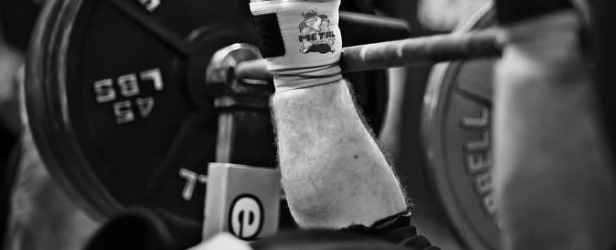
“Success is neither magical nor mysterious.
Success is the natural consequence of consistently applying the basic fundamentals.”
- Jim Rohn
We want you to throw a punch. Yes, get out of your chair right now. (Well, maybe take a quick trip to the restroom if you're surrounded by a busy Wall Street floor—we don't want you knocking out any of your employees even though you have that itch).
So, after you simulate, let's say a jab cross, I want you to freeze and look at the positioning on your wrist: STRONG. POWERFUL. ALI-esque.
Bruce Lee said it best: "There are no wrists in boxing. The forearm and the fist should be used as one solid piece, like a club with a knot on the end of it. The fist should be kept on a straight line with the forearm and there should be no bending of the wrist in any direction."
In sport and in weight training alike, you want to become as efficient as possible. From mobility restraints to lack of stability, any energy leaks can hinder you from nailing that new personal record in your deadlift or fastest knockout.
Enter WRIST positioning.
From the avid beginner to the committed trainee, we see far too many gym goers who fail to keep neutral wrists throughout their lifts. The biggest felony of them all appears in pressing movements.
What we want to see:
What we want to avoid:
Awareness
Usually awareness goes a long way in keeping the wrist strong and cleaning up those energy leaks. Some cues we drill and consciously remind our clients and ourselves of are:
“Knuckles to the ceiling.”
“Throw a punch to the sky.”
“Don’t break the wrists.”
Assistance
When cueing and drilling technique isn’t enough, strength may be the issue. Here are seven excellent ways to work on neutral wrist position. Incorporate these into your assistance exercises.
1. All Barbell Pressing
When performing any press with a straight bar, think of crushing the bar and bending it in half. This will keep the knuckles directed toward the ceiling while activating the forearms and shoulders to help stabilize.
2. Pushups on the Knuckles
Remember, there are no wrists. Perform the pushup without allowing those wrists to break. Finish the lockout like you are punching through the floor.
3. Rack Position Carries
We love to throw carries into our warm ups in order to get the CNS fired up and as another opportunity to fix this weak link. Try this variation with two bells in the rack or overhead (with the arm locked). Keep the wrists in neutral while driving the elbow into the ribs in order to activate the lats and core.
4. Bottoms Up
These are a go-to of ours when a trainee can’t seem keep those wrists strong. Using a kettlebell, we will turn the bell upside down and perform presses, turkish get ups, and carries from this position. Even a hammer KB curl can get the best of you.
5. Towel Inverted Pullups or Rows
Like the bottoms up work mentioned above, the wrists and forearms have no choice but to stay neutral with the inclusion of the towel. Just wrap it around the bar and go to work. Be ready to be humbled.
6. KB or DB Renegade Rows
Here’s another opportunity, like the pushups on the knuckles, to reiterate the lack of wrists while increasing the forearm strength.
7. Ab Wheel Rollouts
Here’s a bonus one—but be aware. Don’t allow those wrists to bend towards you as you increase your range of motion. Now we connect the core to the wrists.
Application
Now it’s on you.
This could all mean nothing. You could just treat it like any other article you read (and quickly forgot) that distracted you from your desk job for a few moments. Your way is better anyway, right?
On the other hand, you could actually apply the technique, become aware of this potential flaw, and perform the exercises to improve your execution. By keeping those wrists strong, you will gain proficiency in your staple lifts and see an actual crossover from practice to competition.
Just don’t let us catch you breaking those wrists!














